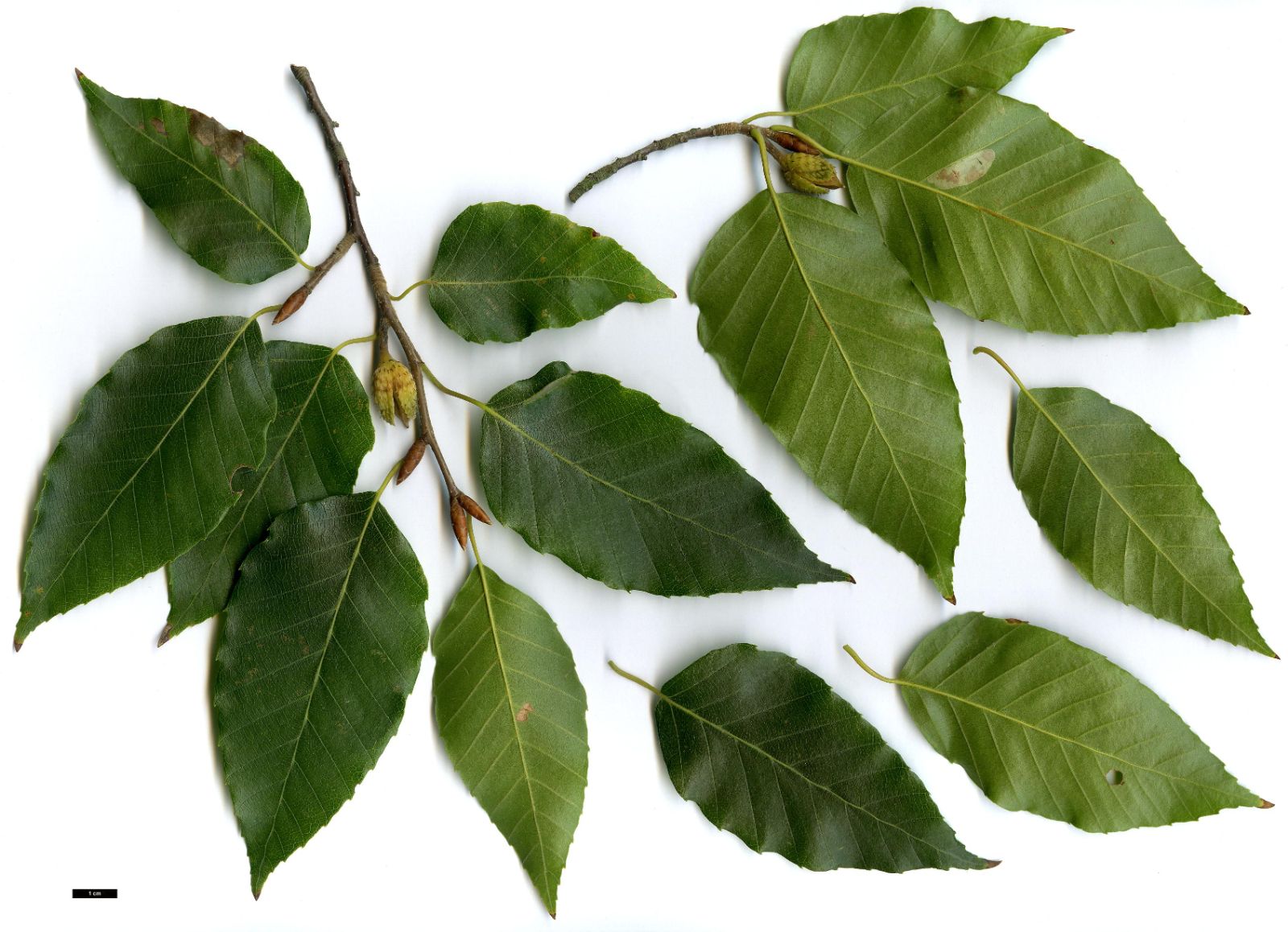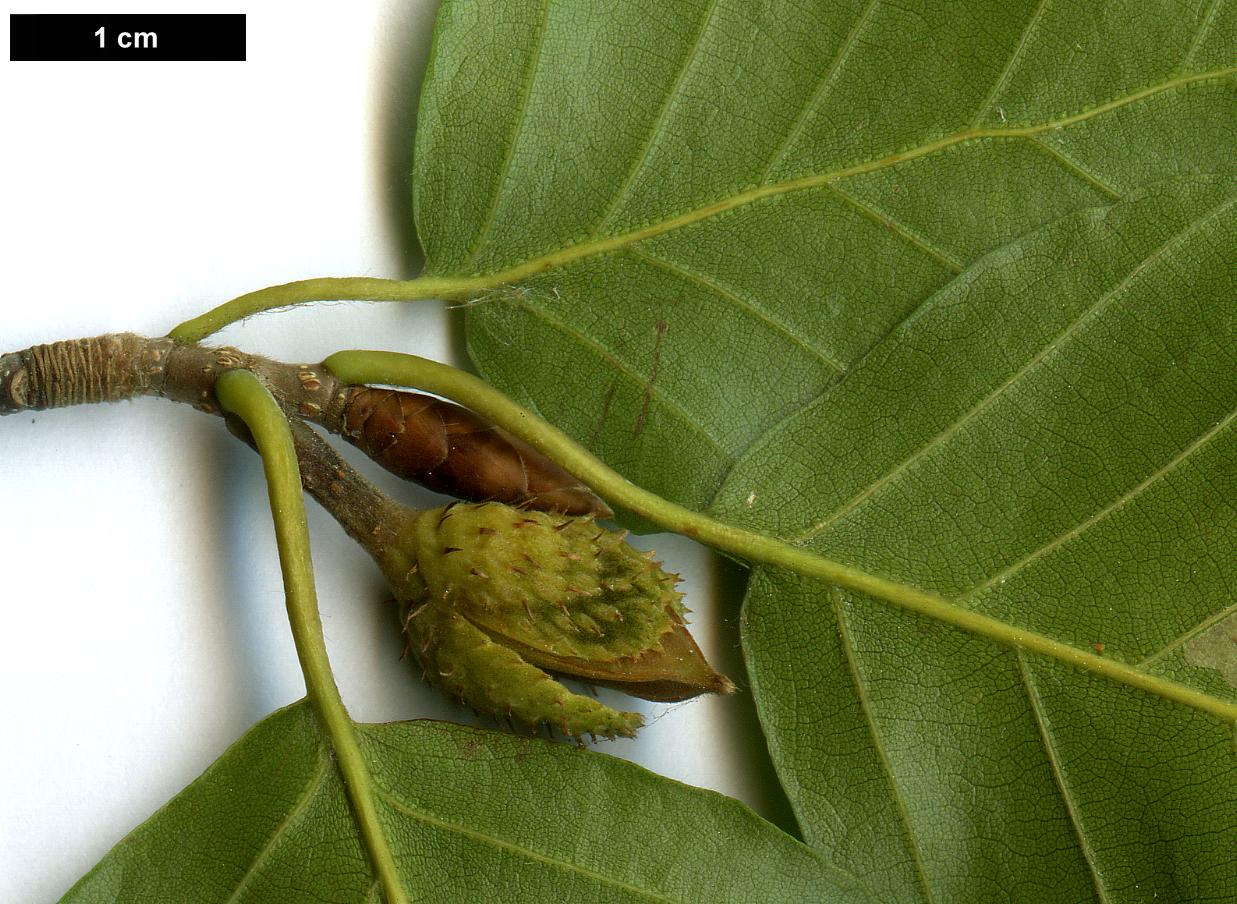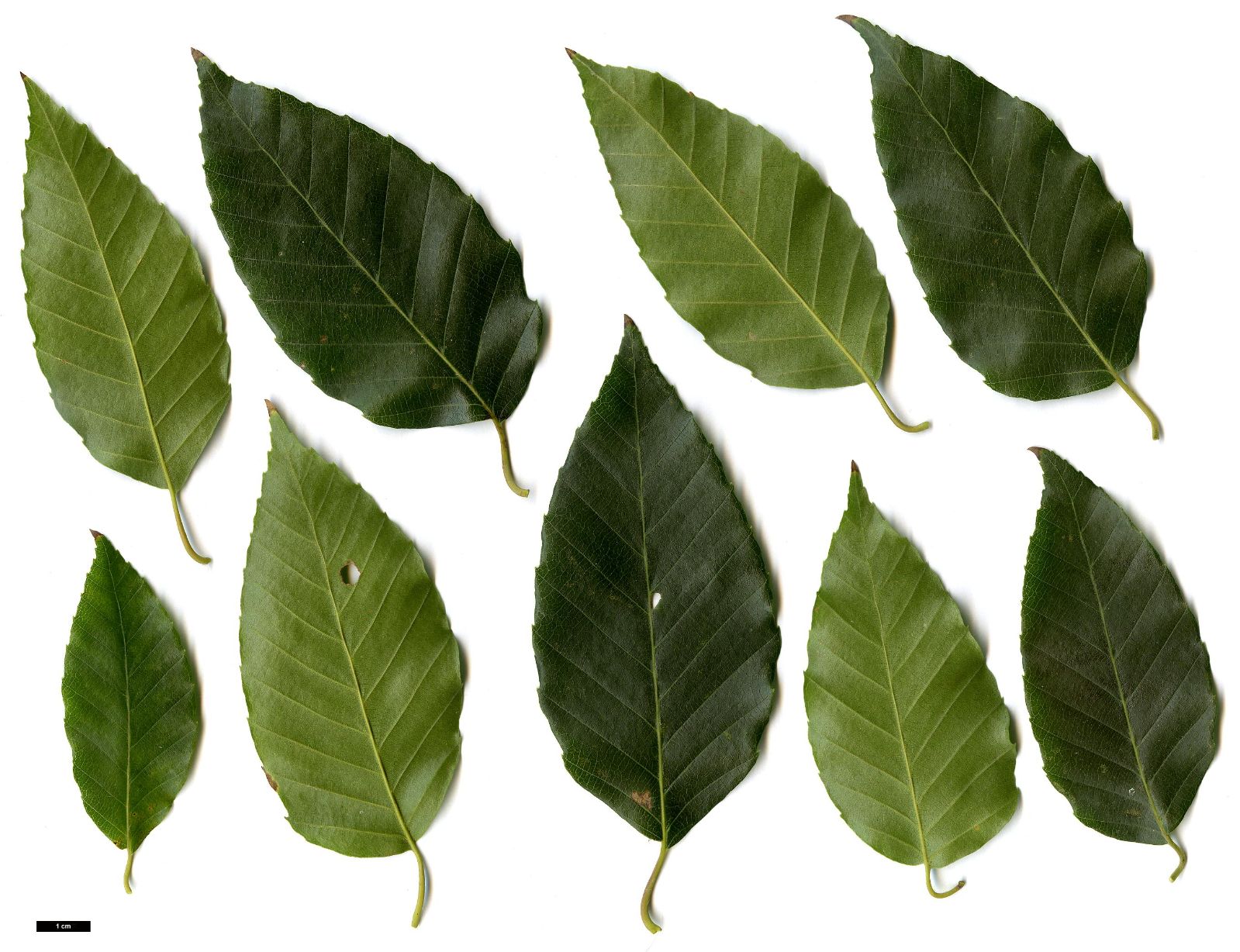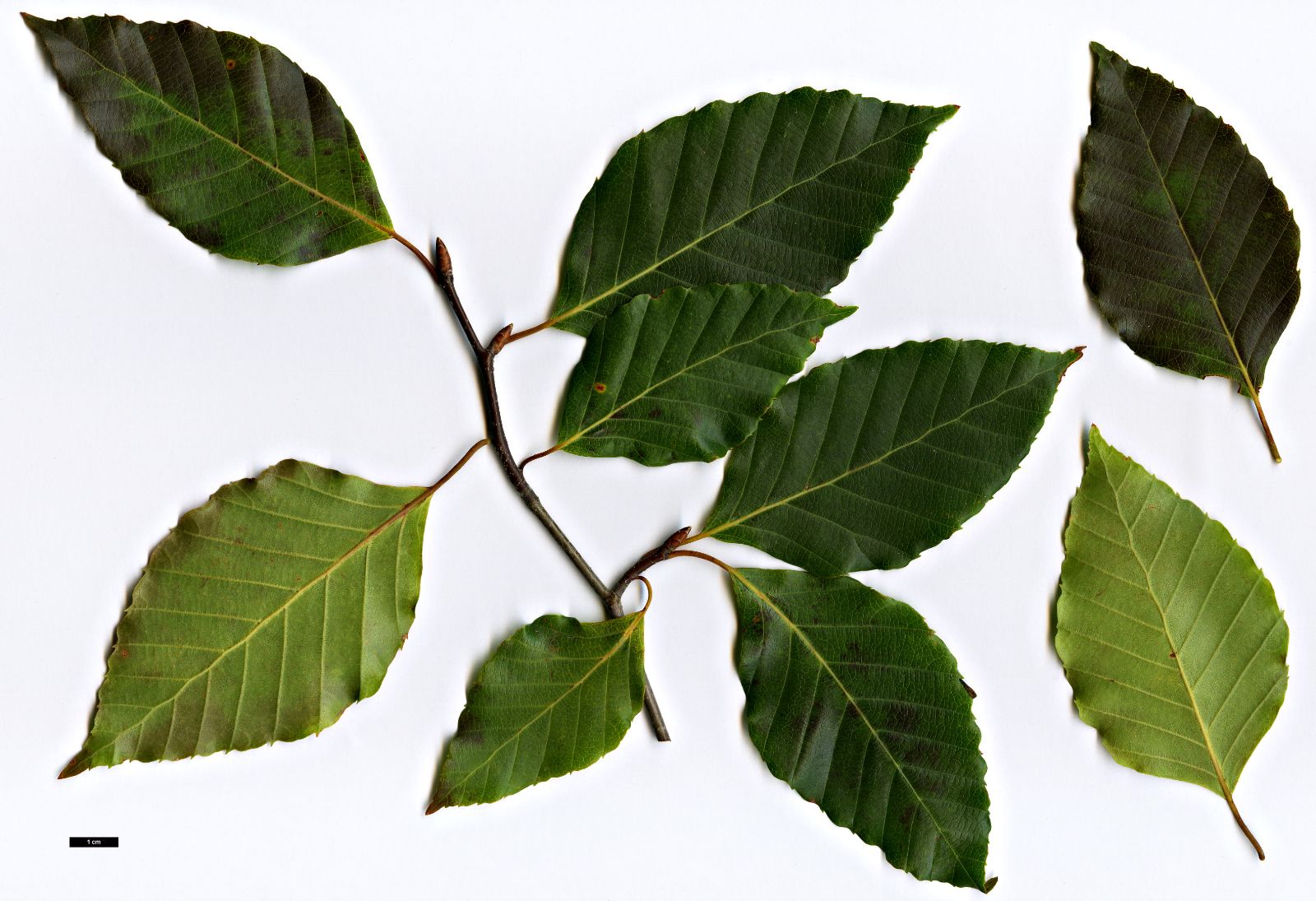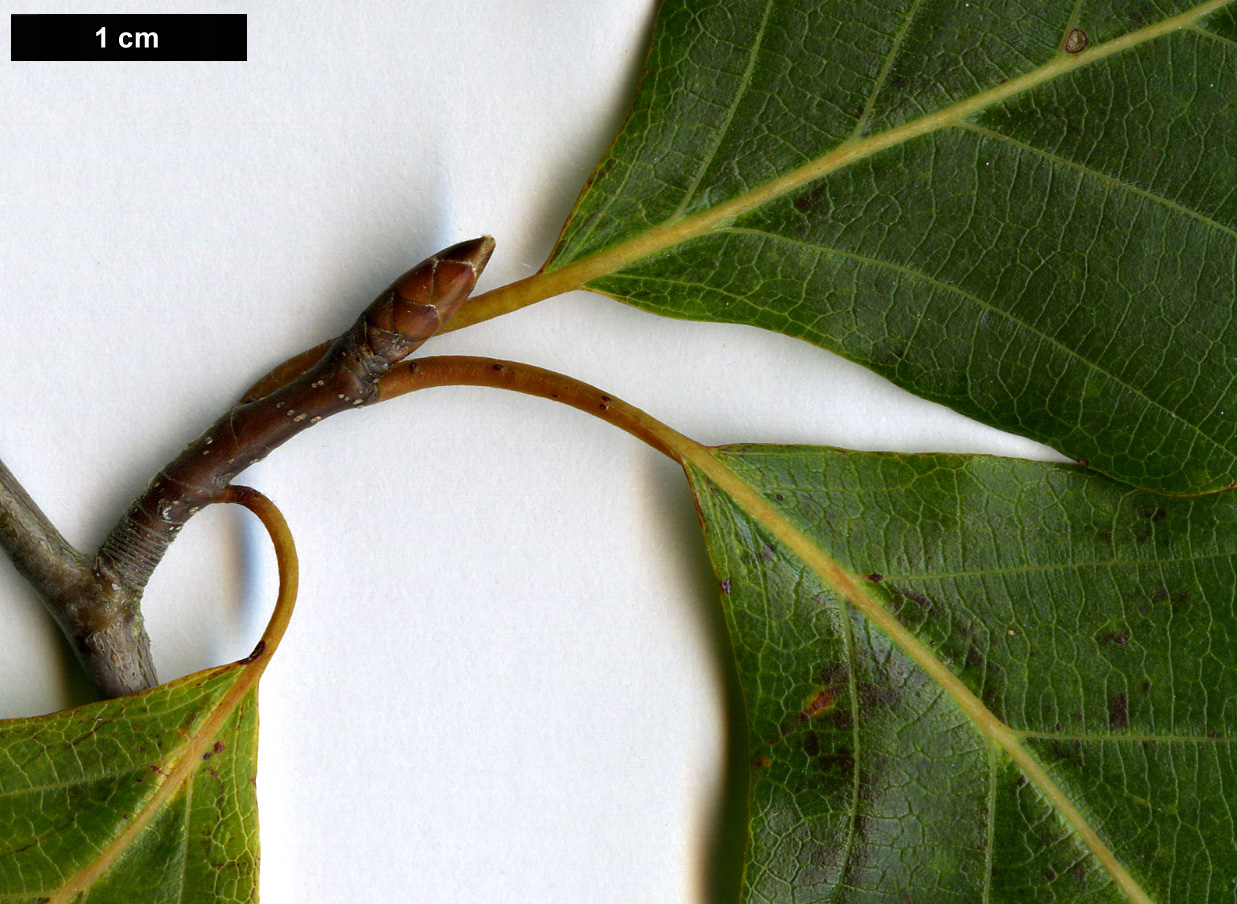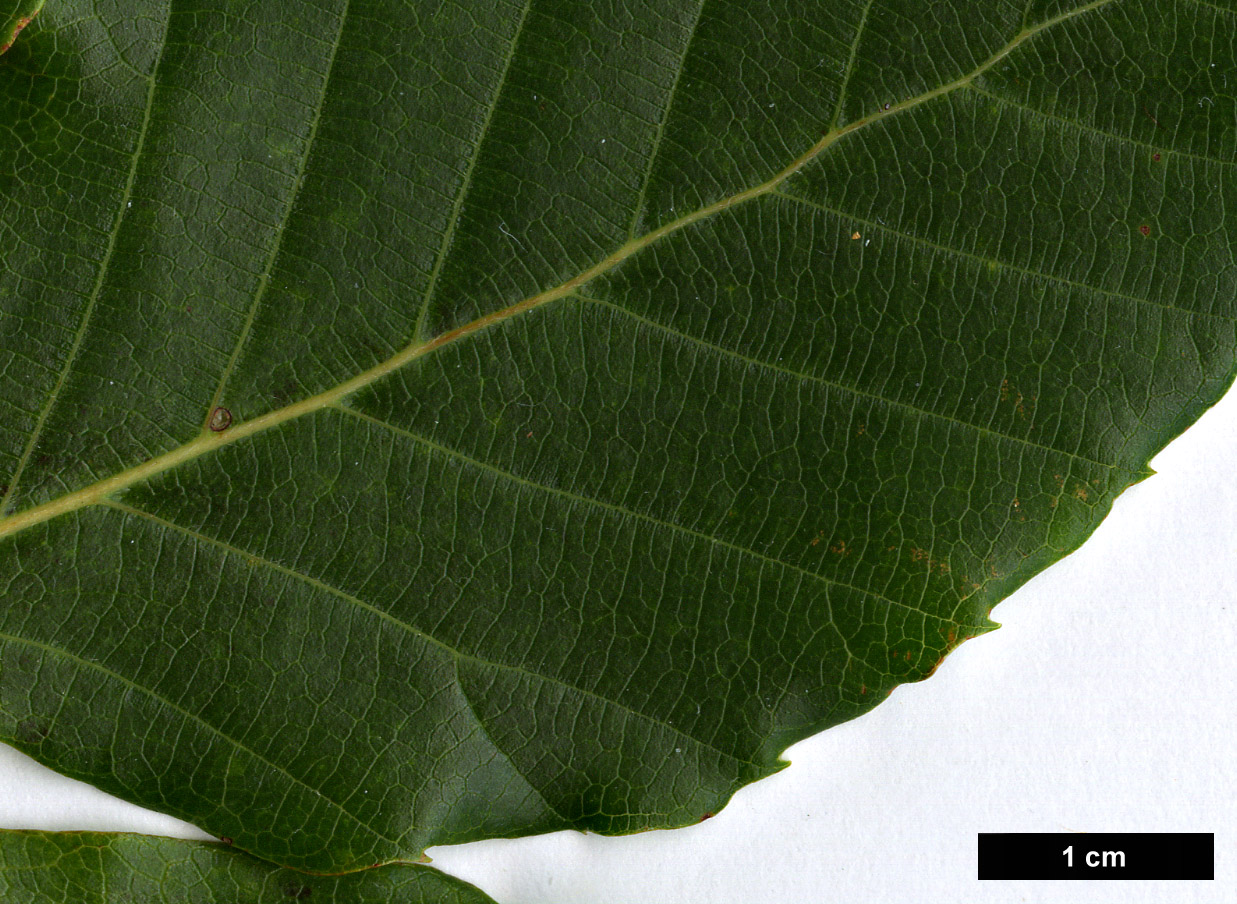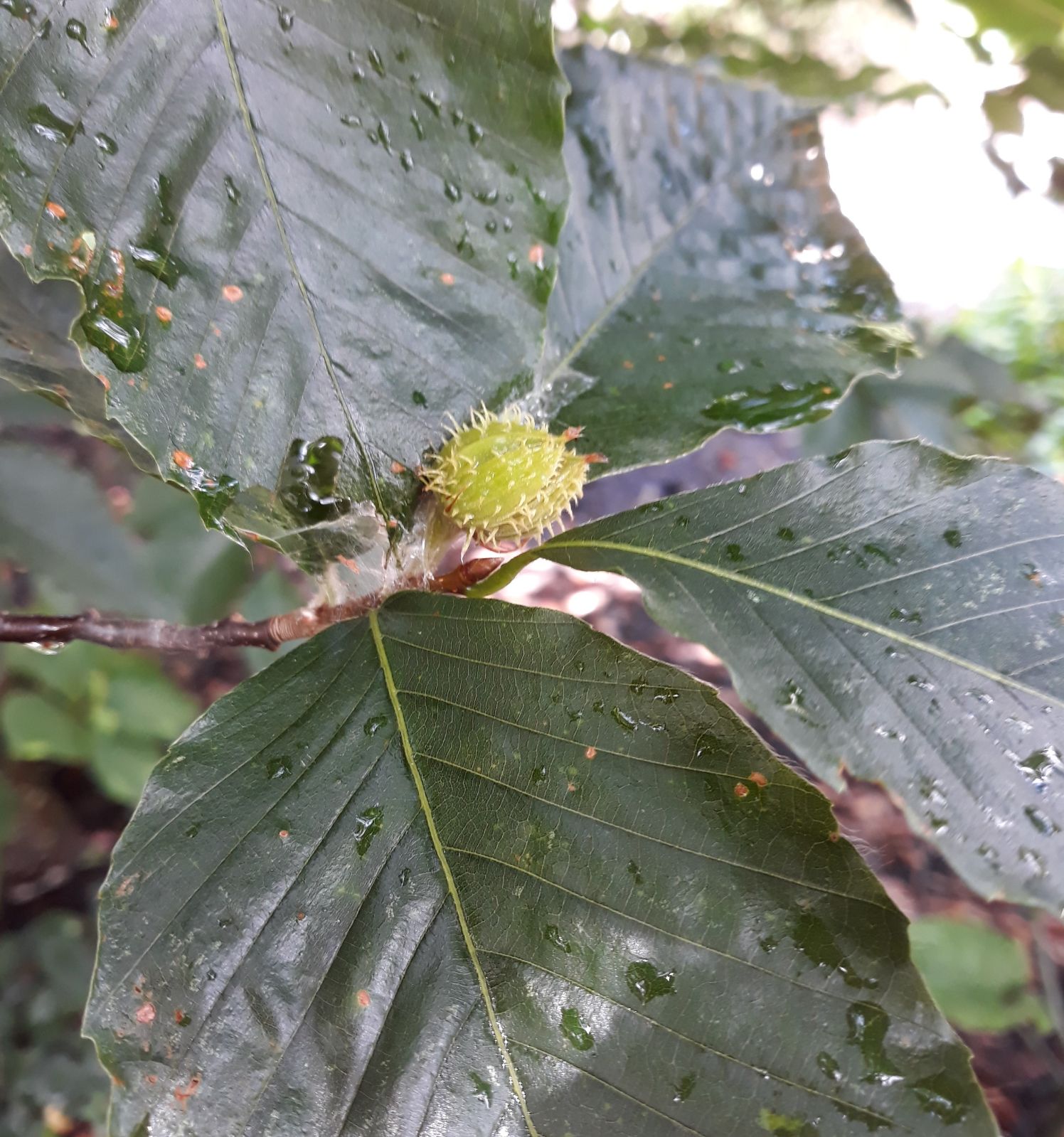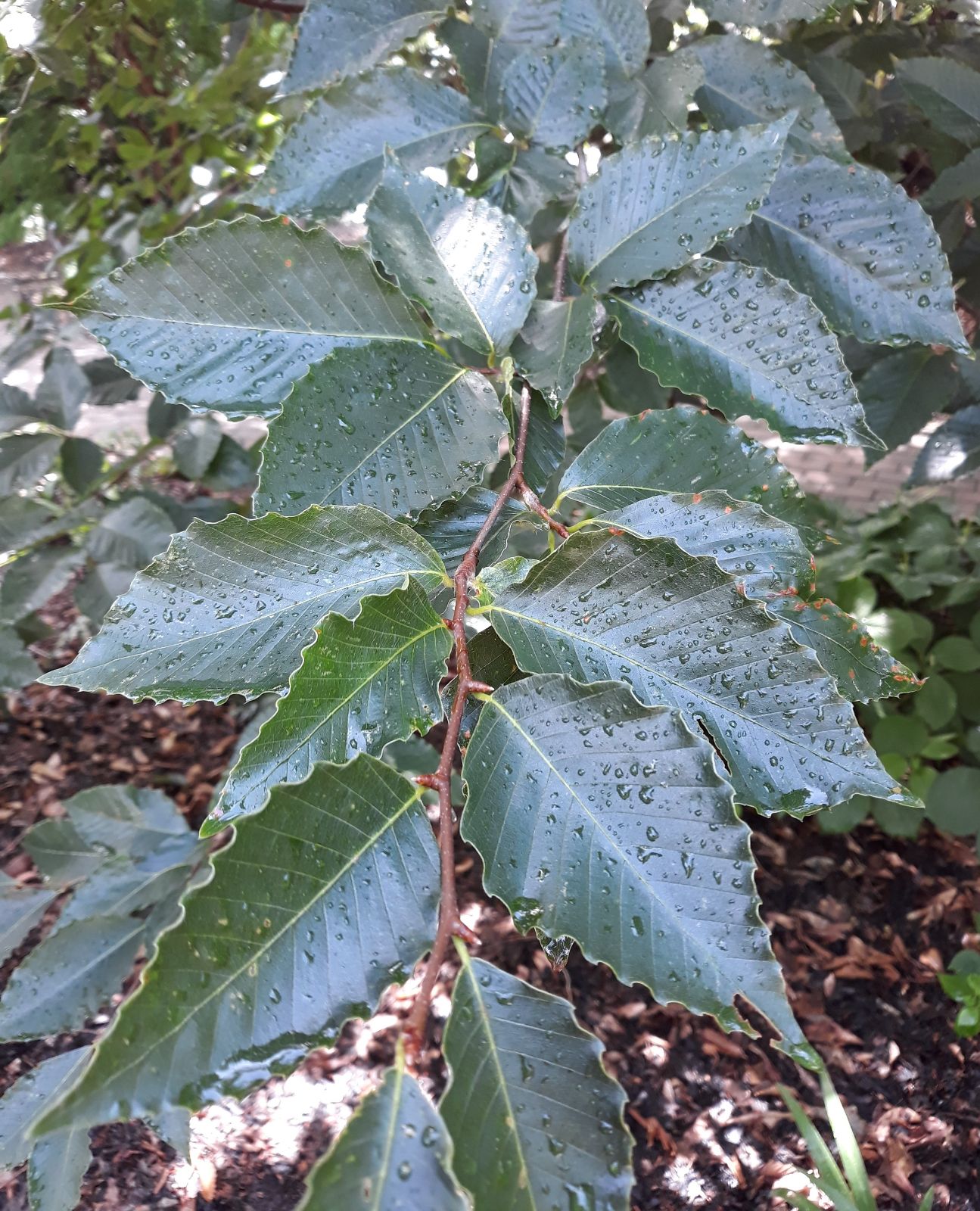Fagus lucida
Sponsor
Kindly sponsored by
a member of the International Dendrology Society
Credits
John Grimshaw & Tom Christian (2021)
Recommended citation
Grimshaw, J. & Christian, T. (2021), 'Fagus lucida' from the website Trees and Shrubs Online (treesandshrubsonline.
Genus
Trees to 25 m, single-stemmed, with thick branches supporting a broad flattened or rounded crown. Bark dull grey. Winter buds ca. 1.5 cm. Petiole 0.6–2 cm; leaf blade ovate to elliptic-ovate, 5–9(–11) × 2–4.5 cm, lustrous green and glabrous except for silky pubescence abaxially on midvein, base broadly cuneate to rounded, margin slightly sinuate, apex acute to shortly acuminate; secondary veins 8–12 on each side of midvein, ending in minute teeth. Peduncle 0.5–1.5 cm, glabrous. Cupule 1–1.5 cm; bracts tuberculate, closely appressed but with recurved tips, triangular mucronate, 1–2 mm, rarely apical ones slightly ascending. Nut slightly exserted, with minute or hardly evident wings near apex. Fl. Apr-May, fr. Sep-Oct. (Huang, Zhang, & Bartholomew 1999; Cullen et al. 2011).
Distribution China Anhui, Fujian, Guangdong, Guangxi, Guizhou, Hubei, Hunan, Jiangxi, Sichuan, Zhejiang.
Habitat Mixed mesophytic forests on mountain slopes; 800–2000 m asl.
USDA Hardiness Zone 7a-7b
RHS Hardiness Rating H5
Conservation status Not evaluated (NE)
Taxonomic note The taxonomy of east Asian Fagus remains controversial. The Flora of China (Huang, Zhang & Bartholomew 1999) consider some populations in Hubei, Hunan, Shaanxi, Sichuan and Zhejiang referable to F. hayatae (treated here as a Taiwanese endemic), while the World Checklist of Fagaceae (Govaerts et al. 2020) refers only populations in Sichuan and Zhejiang to F. hayatae, presumably following authorities such as Lu & Pan (1998) in referring the others to a broad-concept F. lucida. Further research is clearly needed to resolve some of the underlying issues.
Despite having been discovered by Augustine Henry in 1887 and collected by Wilson in 1911 (Bean 1981) Fagus lucida is still a very poorly known species, with few examples in cultivation – though it is currently offered by several British nurseries (RHS Plant Finder 2017–18). A specimen at Nymans, West Sussex, was recorded as having reached 12.5 m in 1970, while the Tree Register records that one at Birr Castle, Co. Offaly, achieved 16 m (1990, but since gone). The current British and Irish champion is a 15 m (45 cm dbh) specimen at Thorp Perrow Arboretum, North Yorkshire (planting date unknown) (Tree Register 2019). It is in cultivation in North America, for example at the JC Raulston Arboretum (JC Raulston Arboretum 2019) and in continental Europe, for example at Wespelaar (Arboretum Wespelaar 2019) but scarce everywhere.

